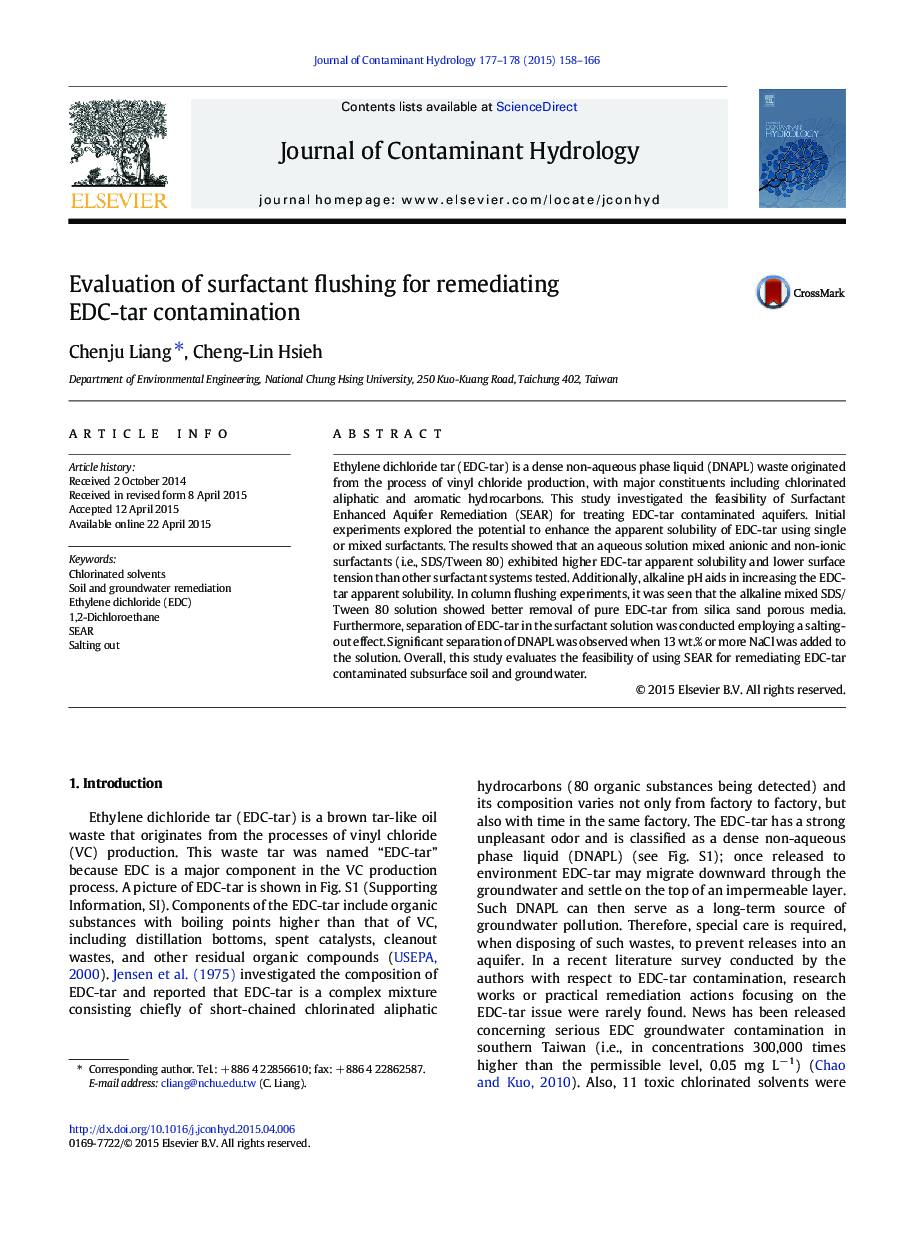| کد مقاله | کد نشریه | سال انتشار | مقاله انگلیسی | نسخه تمام متن |
|---|---|---|---|---|
| 4546445 | 1627032 | 2015 | 9 صفحه PDF | دانلود رایگان |

• EDC-tar is a brown tar-like oil waste that originates from VC production.
• The feasibility of SEAR for treating EDC-tar contaminated aquifers was conducted.
• Alkaline SDS/Tween 80 solution exhibits greater EDC-tar removal from porous media.
• The salting-out effect is applicable for recovering EDC-tar in surfactant solution.
Ethylene dichloride tar (EDC-tar) is a dense non-aqueous phase liquid (DNAPL) waste originated from the process of vinyl chloride production, with major constituents including chlorinated aliphatic and aromatic hydrocarbons. This study investigated the feasibility of Surfactant Enhanced Aquifer Remediation (SEAR) for treating EDC-tar contaminated aquifers. Initial experiments explored the potential to enhance the apparent solubility of EDC-tar using single or mixed surfactants. The results showed that an aqueous solution mixed anionic and non-ionic surfactants (i.e., SDS/Tween 80) exhibited higher EDC-tar apparent solubility and lower surface tension than other surfactant systems tested. Additionally, alkaline pH aids in increasing the EDC-tar apparent solubility. In column flushing experiments, it was seen that the alkaline mixed SDS/Tween 80 solution showed better removal of pure EDC-tar from silica sand porous media. Furthermore, separation of EDC-tar in the surfactant solution was conducted employing a salting-out effect. Significant separation of DNAPL was observed when 13 wt.% or more NaCl was added to the solution. Overall, this study evaluates the feasibility of using SEAR for remediating EDC-tar contaminated subsurface soil and groundwater.
Journal: Journal of Contaminant Hydrology - Volumes 177–178, June–July 2015, Pages 158–166